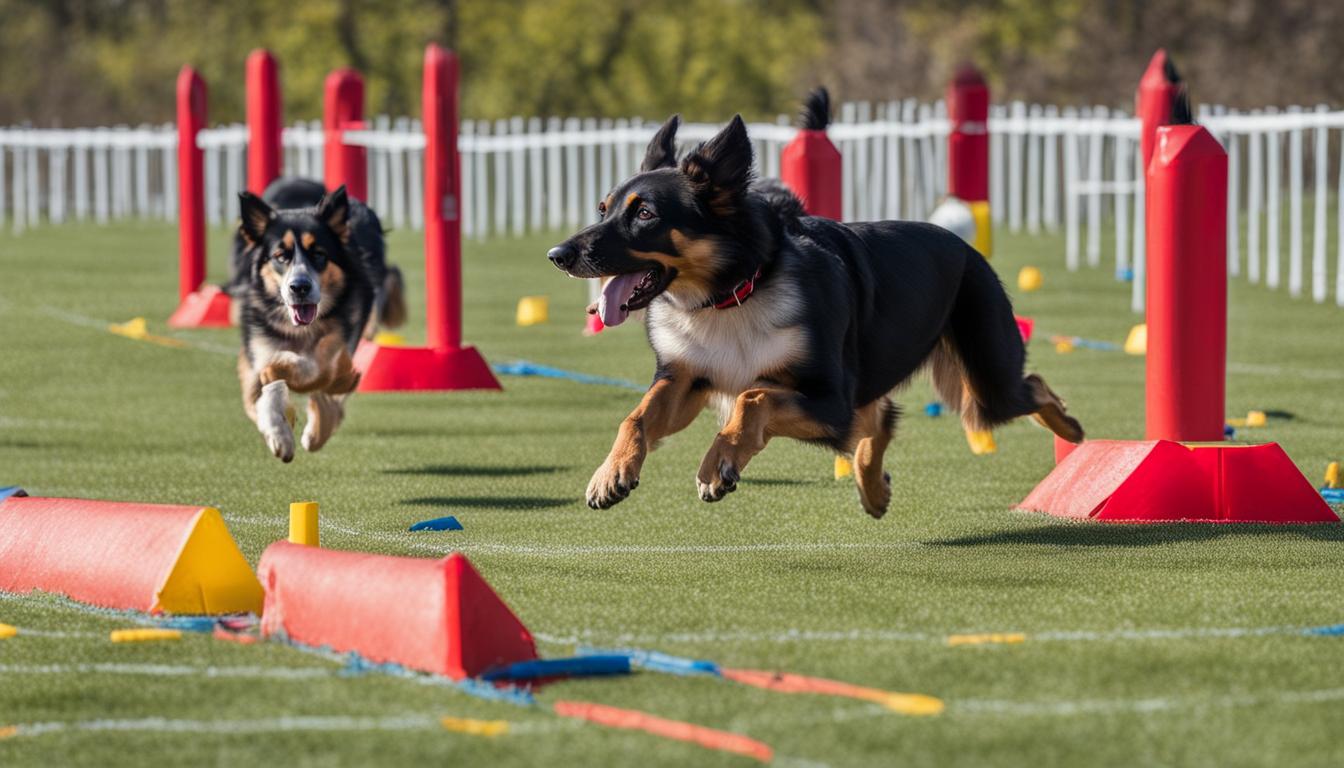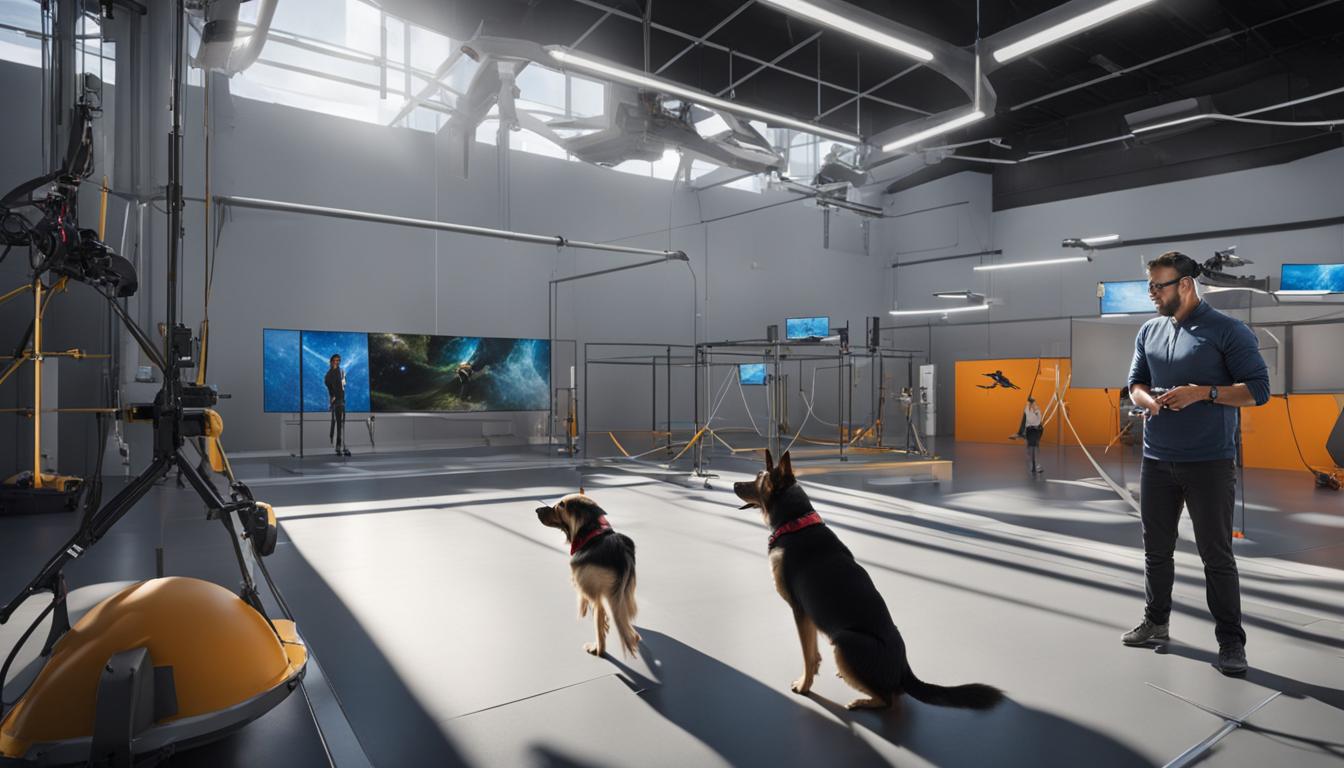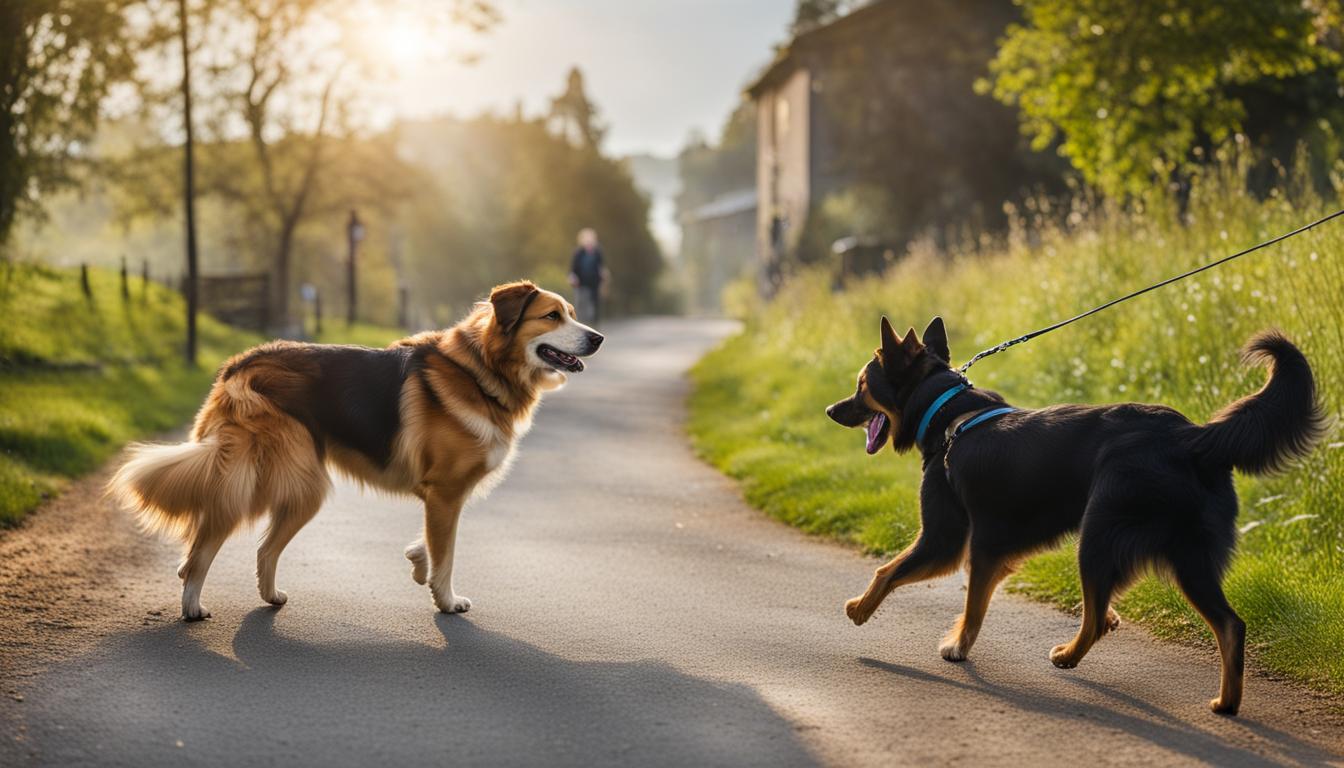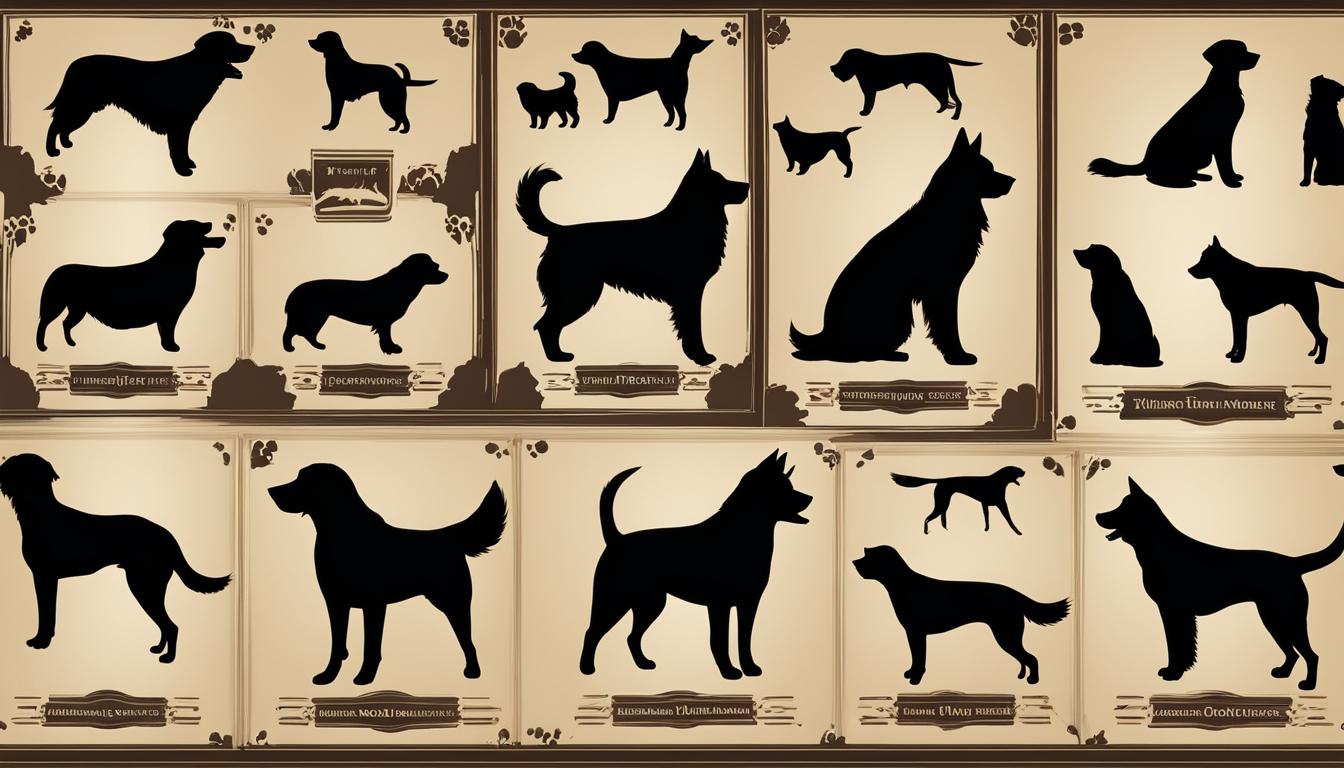Welcome to the world of advanced dog command training! If you’ve mastered the basics of obedience training and are ready to take your dog’s skills to the next level, you’re in the right place. Advanced command training goes beyond the usual sit and stay, teaching your furry friend more complex behaviors and skills that will truly impress. Not only will this type of training strengthen your bond with your dog, but it will also enhance their obedience and improve communication between the two of you.
So, what exactly does advanced command training entail? It involves using advanced obedience training techniques to challenge and stimulate your dog’s intelligence. From distance work to blind work and tackling distractions, these techniques will push your dog’s abilities to new heights. Let’s dive into the details and explore the exciting world of advanced obedience training!
Key Takeaways
- Advanced dog command training takes obedience to a whole new level, building on the basics and teaching more complex behaviors.
- Techniques such as distance work, blind work, and training dogs to come past distractions are essential in advanced obedience training.
- Distance work teaches dogs to respond to cues from a distance, improving their reliability and obedience.
- Blind work trains dogs to respond to cues even without eye contact, useful in situations where direct communication may not be possible.
- Teaching dogs to come past distractions ensures a reliable recall even in challenging environments.
Distance Work: Teaching Commands from a Distance
Advanced dog command training goes beyond the basics of obedience and delves into more complex behaviors and skills. One essential aspect of this training is distance work, which focuses on teaching dogs to respond to commands from a distance. This skill is particularly valuable in situations where a dog needs to drop down or stay regardless of their proximity to their owner.
To teach distance work, start with a solid verbal cue that the dog is already familiar with, such as “down” or “stay.” Begin at a close distance and gradually increase the distance between you and your dog while giving the command. This progressive approach helps the dog generalize the command and understand that it applies even when they’re not right in front of you. Reinforce their success with rewards and praise to keep them motivated.
Distance work is an advanced training technique that requires patience and consistency. It challenges dogs and strengthens their discipline by pushing them to rely solely on their understanding of the command, rather than relying on visual cues or proximity to their owner. By mastering distance work, your dog will become more obedient and responsive, even in challenging situations.
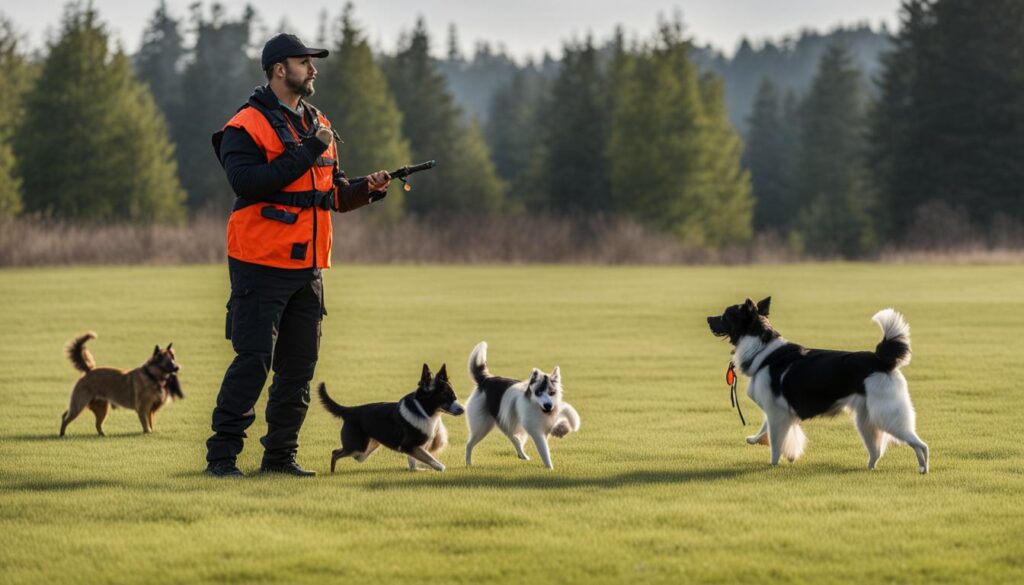
Distance Work Training Tips:
- Start with a solid verbal cue that your dog already knows.
- Gradually increase the distance between you and your dog while giving the command.
- Use positive reinforcement, such as treats or praise, to motivate and reward your dog.
- Practice distance work in different environments to help your dog generalize the command.
- Be patient and consistent in your training sessions.
Blind Work: Teaching Commands Without Eye Contact
Blind work is a fundamental aspect of advanced dog command training that focuses on teaching dogs to respond to cues without relying on eye contact. This elevated training routine enhances dogs’ obedience and behavioral correction, allowing them to respond to commands even when their owner’s back is turned or they are facing away. By eliminating the visual cue of eye contact, blind work reinforces dogs’ understanding of verbal and physical cues, making their responses more reliable in various situations.
Teaching blind work requires a gradual approach, starting with simple commands and increasing the level of difficulty over time. The process involves cueing the behavior while turning away from the dog and gradually introducing distractions or increasing the degree of turn. Owners can use hand signals or mirrors to provide feedback and reinforcement to the dog, ensuring they understand and respond to the commands accurately.
“Blind work is not just about teaching dogs to follow commands without eye contact – it’s about building a deep level of trust and communication between the owner and their furry companion.” – Dog Training Expert
Benefits of Blind Work in Advanced Dog Command Training
Blind work offers several benefits in advanced dog command training. Firstly, it fosters enhanced focus and listening skills in dogs, as they learn to rely solely on verbal and physical cues rather than visual cues. This level of concentration strengthens their overall obedience and responsiveness, making them more reliable in real-life scenarios.
Secondly, blind work builds resilience and adaptability in dogs by teaching them to respond to commands despite distractions or the absence of eye contact. This skill is particularly valuable in situations where eye contact may not be possible or practical, such as when the owner’s back is turned or during off-leash walks in busy environments.
Overall, incorporating blind work into advanced dog command training elevates the dog’s understanding of commands, deepens the bond between the owner and their pet, and enhances their overall behavior and obedience.
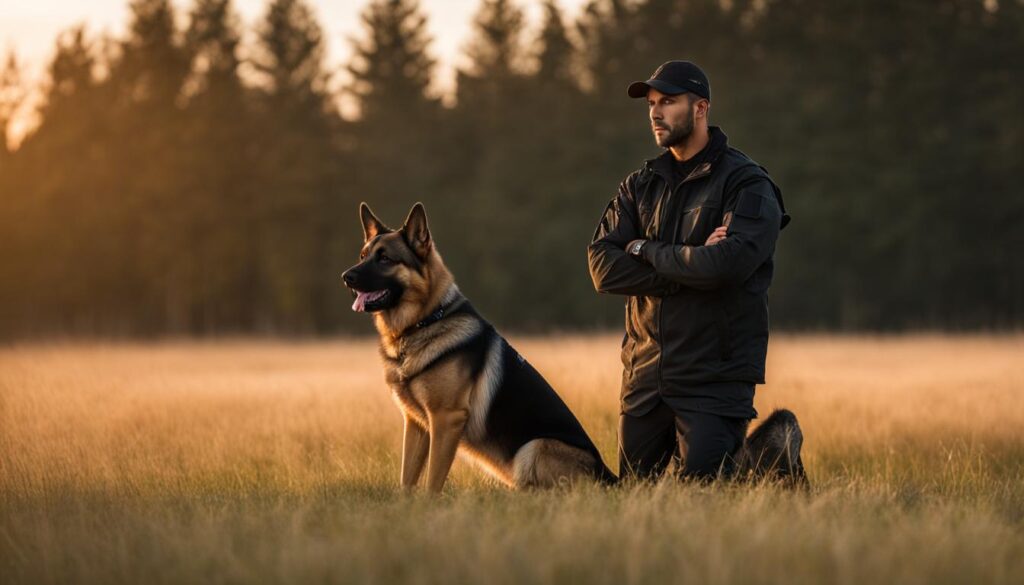
Mastering Complex Commands in Training
When it comes to advanced dog command training, one of the most critical skills to develop is teaching your furry friend to come past distractions. This command requires dogs to respond reliably, even in the presence of other animals, people, or loud noises. By mastering this complex command, you can ensure that your dog remains focused and obedient in any situation.
To successfully train your dog to come past distractions, it’s essential to use progressive training methods. Start by introducing low-level distractions, such as a toy or a treat, and practice the recall command in a calm environment. Gradually increase the difficulty by introducing more challenging distractions, such as other dogs or noises. This incremental approach helps your dog maintain focus and respond to commands, even in the face of tempting distractions.
“Teaching your dog to come past distractions requires patience and consistency. By using positive reinforcement techniques, such as treats or praise, you can motivate your furry friend to remain focused and responsive, even in the most challenging situations.” – Dog Trainer
Effective Strategies for Training Come Past Distractions:
- Start training in a controlled environment with minimal distractions.
- Gradually increase the difficulty by introducing distractions one at a time.
- Use positive reinforcement, such as treats or praise, to reward your dog’s obedience.
- Practice recall commands regularly to maintain a strong response when faced with distractions.
- Consistency is key! Reinforce the command in various environments to generalize the behavior.
By implementing these strategies and using progressive training methods, you can master the art of teaching your dog to come past distractions. This advanced command will not only enhance your dog’s obedience but also strengthen the bond between you and your furry companion.
| Distraction Level | Description |
|---|---|
| Low | A toy or treat placed near the dog |
| Moderate | Another friendly dog nearby |
| High | Loud noises or crowded environment |
Remember, advanced dog command training requires patience and consistency. With time and practice, you can master the art of teaching your dog to come past distractions and enjoy the benefits of a well-trained and obedient companion.
Conclusion
Congratulations on completing this journey into advanced dog command training! By going beyond basic obedience training and delving into more complex behaviors, you’ve taken important steps in enhancing your dog’s skills and intelligence. Through advanced training, you’ve strengthened the bond with your furry friend and ensured better obedience in various situations.
Training dogs in distance work, blind work, come past distractions, and targeting to objects not only provides mental stimulation but also improves communication and promotes better behavior overall. These advanced skills development exercises challenge your dog’s abilities and keep their minds sharp.
Remember, patience is key in advanced training. Consistency and positive reinforcement will go a long way in achieving remarkable results. By rewarding your dog’s progress and keeping the training sessions fun and engaging, you’ll continue to enhance their intelligence and bring out the best in them.
So, continue to explore the world of advanced dog command training, unlock your dog’s full potential, and enjoy the benefits of a well-trained and well-behaved furry companion. Keep up the great work!
FAQ
What is advanced command training for dogs?
Advanced command training for dogs goes beyond basic obedience training and focuses on teaching more complex behaviors and skills.
How does advanced training improve communication and relationship between dogs and their owners?
Advanced training strengthens the reliability of the dog’s responses to cues, enhances overall obedience, and deepens the bond between dogs and their owners.
What are some examples of advanced obedience training techniques?
Examples include distance work, blind work, come past distractions, and targeting to objects.
What is distance work?
Distance work involves teaching dogs to respond to cues from a distance, not just when they are right in front of their owners. It helps dogs generalize commands to real-life situations.
What is blind work?
Blind work teaches dogs to respond to cues even when their owners are not looking at them or when they are facing away. It helps dogs obey commands when eye contact may not be possible.
How can I teach my dog to come past distractions?
To teach reliable recall amidst distractions, start with low-level distractions and gradually increase difficulty. Positive reinforcement techniques, such as treats or praise, can motivate dogs to remain focused and responsive.
Why is advanced command training beneficial for dogs?
Advanced training enhances dogs’ skills and intelligence, improves communication, promotes better behavior, and strengthens the bond between dogs and their owners.

